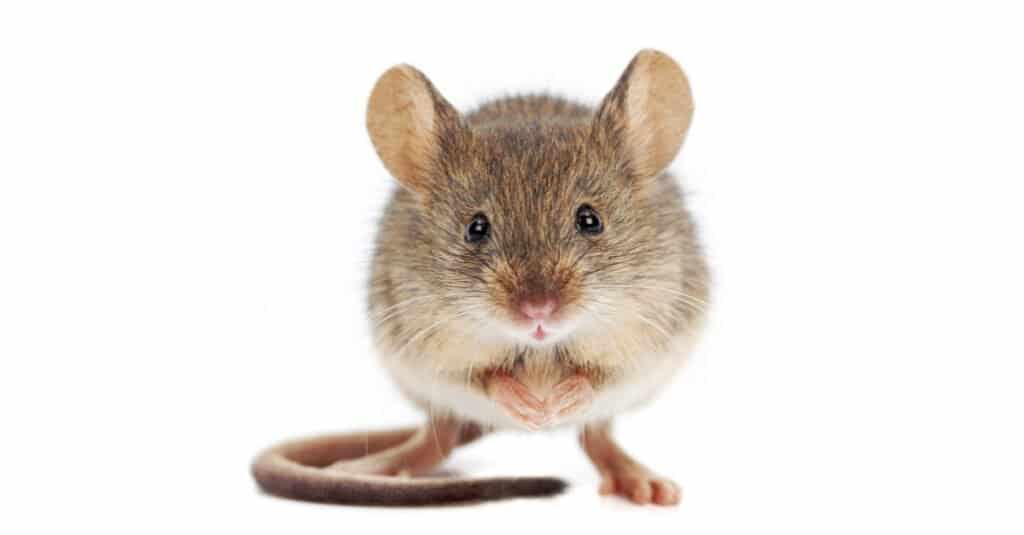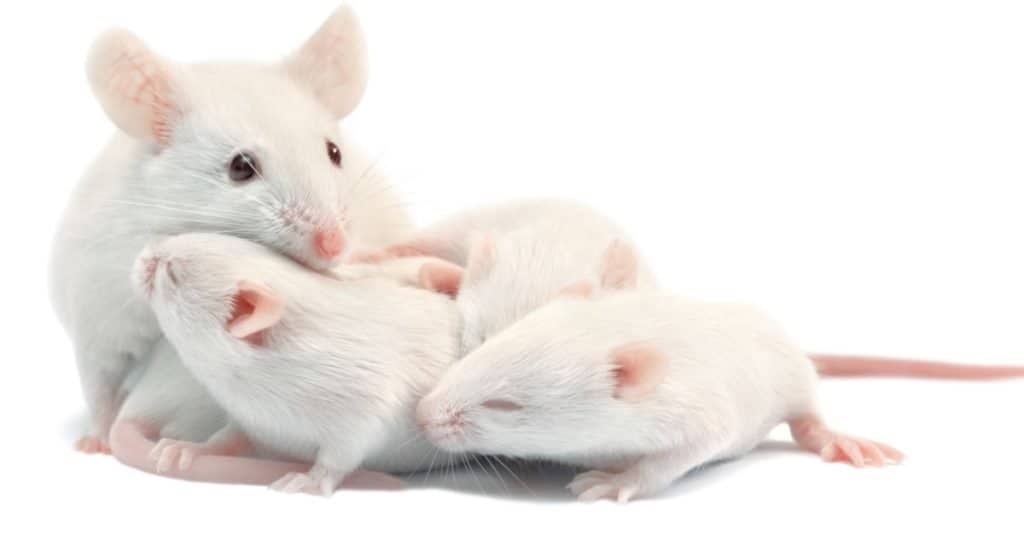Mice are known the world over as pests, pets, and cheese-eaters. There are 38 species of the genus ‘Mus’ alone, but there are more than 1,100 subspecies of what we would call ‘mouse’. Mice live everywhere humans live, and — they’re essential to medical research, especially research on the effects of ageing. But just how old is the oldest mouse ever? We’ll discover the world’s oldest mouse, and see how it compares to other mice.
What Makes a Mouse?

Have you ever used the phrase “quiet as a mouse?” Welcome to the world of animal analogies!
©Szasz-Fabian Jozsef/Shutterstock.com
(Photo Caption) Mice live all over the world
Mice are characterized by their small size, large rounded ears, pointed snouts, long tails, and furry bodies. Species of mouse are divided into Old World Mice and New World Mice (like the grasshopper mouse and the cactus mouse), with the most common species being the common house mouse (Mus musculus). This is the same species used in scientific research all over the world, commonly known as the white lab mouse.
Mice live on all seven continents, even Antarctica! In fact, they’re thought to be the most populous mammal on the planet. Mice don’t typically have great eyesight, but they do have excellent hearing, and can hear much better than humans. They are also extremely athletic and can jump up to 18 inches. That would be like a human jumping over 50 feet!
Though mice are popularly known as cheese lovers, they actually prefer a diet high in nuts, fruits, grains, seeds, and carbohydrates. That’s not to say that mice will turn down a meal of cheese — or any other food scrap — if they find it, but it’s not their preferred food. Urban dwelling mice especially will eat just about anything they can find, even meat.
Mouse Lifespan

Mice have a lifespan of 12 to 18 months in the wild.
©Rudmer Zwerver/Shutterstock.com
In the wild, mice typically live between 12 and 18 months. With a gestation ranging from 19 days for the Common House Mouse, to 39 days for the Cairo Spiny Mouse, mice can reproduce quickly and in large numbers. Mice become mature, and able to reproduce, as young as four weeks of age. Most varieties of wild mice are dull brown in color, though some are very light brown, with darker ears and snout.
Domestic mice can live much longer than wild mice, with most reaching at least two years of age. Pet mice also come in a wider variety of colors, some are even spotted or striped. Fancy mice are pet mice specifically bred for their interesting colors. They are often dual colored with white, brown, or black spots.
Laboratory mice, bred from the common house mouse, are the longest lived variety of mouse. They are almost always white, and because of their quick reproduction and similarity to humans, are the preferred species for medical testing around the world. Lab mice are uniquely suited to studies on ageing. In fact, both the world’s oldest, and second oldest, mice, were lab mice.
The World’s Oldest Mouse

The oldest mouse in the world was a laboratory mouse named Yoda that lived to be four years old.
©anyaivanova/Shutterstock.com
The official title of the world’s oldest mouse belongs to a lab mouse named Yoda, who lived to be four years old.
Yoda died in 2004, one week after his fourth birthday — or, in human years, his 136th birthday. He was a genetically altered dwarf mouse, specifically bred and cared for to reach old age. As part of a medical study on aging, Yoda lived out his days in a specialized sterile laboratory designed for geriatric mice.
Yoda was specifically bred to stay small, age slowly, and live long. Scientists achieved this by reducing the amount of growth hormone he received when he was young. Though this allowed Yoda to live to an extraordinary age for a mouse, it also made it very difficult for him to stay warm. Therefore, Yoda’s scientist handlers provided him with a full-sized companion mouse to cuddle with for warmth. His last companion was, very appropriately, named Princess Leia.
Though less well-known than Yoda, another laboratory mouse identified as ‘GHR-KO 11c’ is reported to have lived even longer, dying just one week short of his fifth birthday. Both mice were bred, and cared for, specifically to reach old age. The effects of ageing on both mice were studied to improve scientists’ understanding of ageing in humans.
Endangered Mice
Though mice are one of the most common species on the planet, there are many varieties of mouse that are actually endangered. The Perdido Key beach mouse, a type of mouse that lives along the Gulf Coast of America’s south, is critically endangered. The Perdido Key beach mouse lives in sparsely vegetated sand dunes along the beach, and, interestingly, mates for life. Other varieties of endangered mouse include the salt marsh harvest Mmouse, the Choctawhatchee beach mouse, and the Pacific pocket mouse, and many other species.
Mouse species most often become endangered due to habitat loss, or severe change to habitat for specialized species. Mice are also in danger from predators, and are especially vulnerable to invasive species, like cats, that disproportionately prey on them. Additionally, mice, just like many species, suffer from climate change and human encroachment.
The photo featured at the top of this post is © anyaivanova/Shutterstock.com
Thank you for reading! Have some feedback for us? Contact the AZ Animals editorial team.






